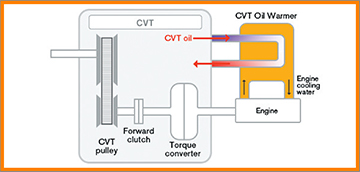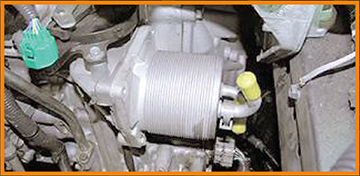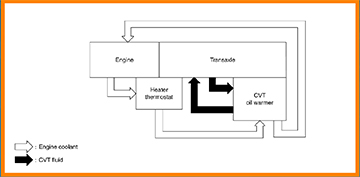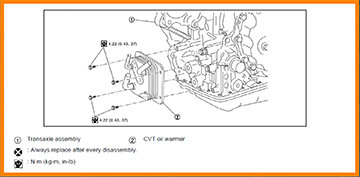CVT Oil Warmer
An engine that combusts fuel internally finishes warming up comparatively quickly, but a transmission warms with friction heat from driving as its main heat source and takes more time to warm up. When the engine is started while it and the CVT are cold, engine coolant temperature rises more quickly than CVT fluid temperature.

Oil is essential for the proper function of a CVT. A shared feature of all types of oil and fats is that oil viscosity is higher at low temperatures, such as during an engine cold-start. If oil viscosity is high, the engine cannot run smoothly, which places a strain on the engine.
The CVT oil warmer utilizes engine coolant and quickly increases the temperature of the CVT oil until it reaches an appropriate temperature.
The CVT oil warmer is installed on the front part of the CVT transaxle assembly. The CVT oil warmer is provided with two circuits for the CVT and engine coolant respectively so that warmed engine coolant warms the CVT quickly. As a result, it helps reduce the time that the oil is at a low temperature, thus reducing the burden on the engine, which is particularly helpful in colder regions or for short drives. This helps shorten the CVT warming-up time, improving fuel economy.


Heater Thermostat
The heater thermostat is installed on the front part of the transaxle assembly to open and close with a set temperature.
